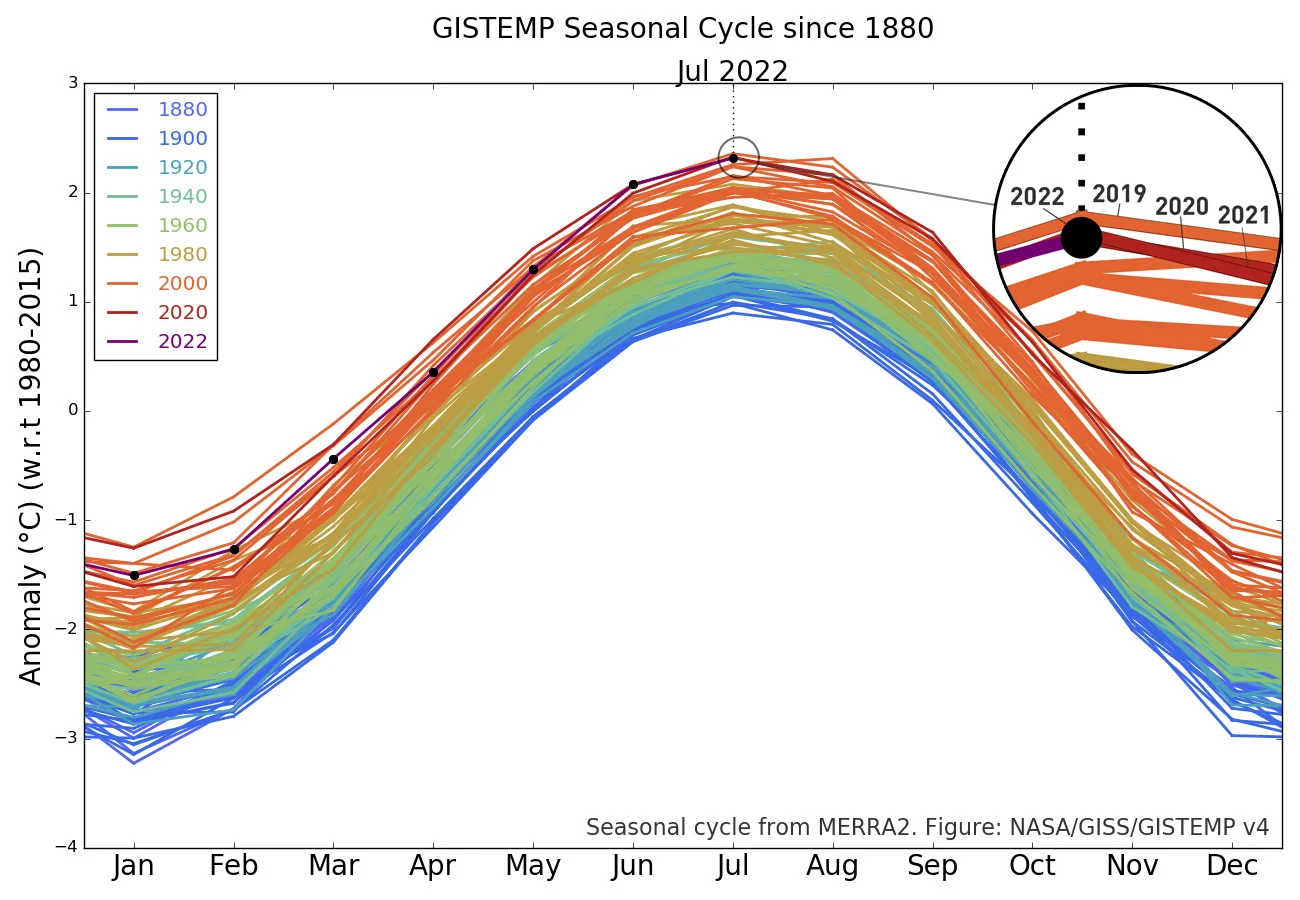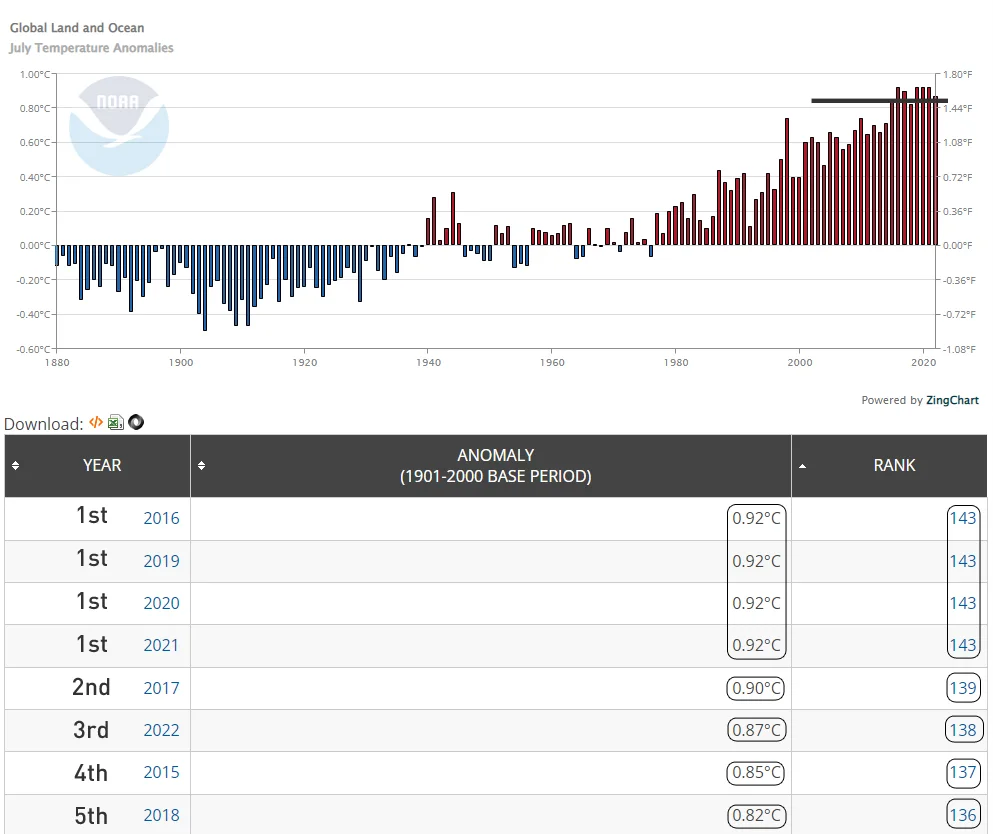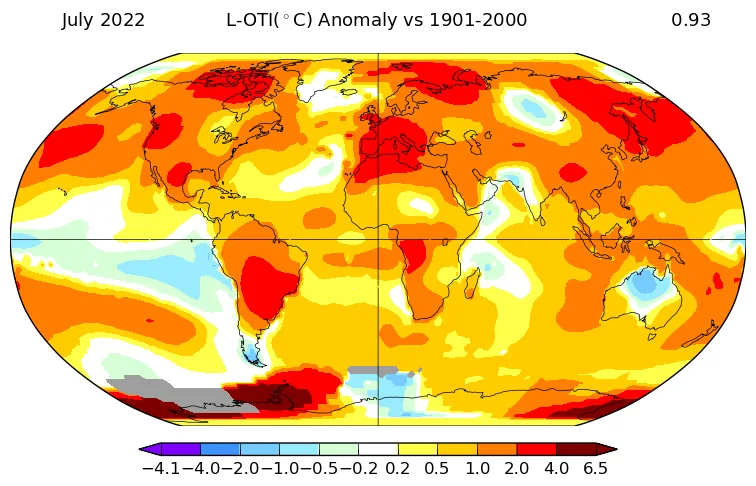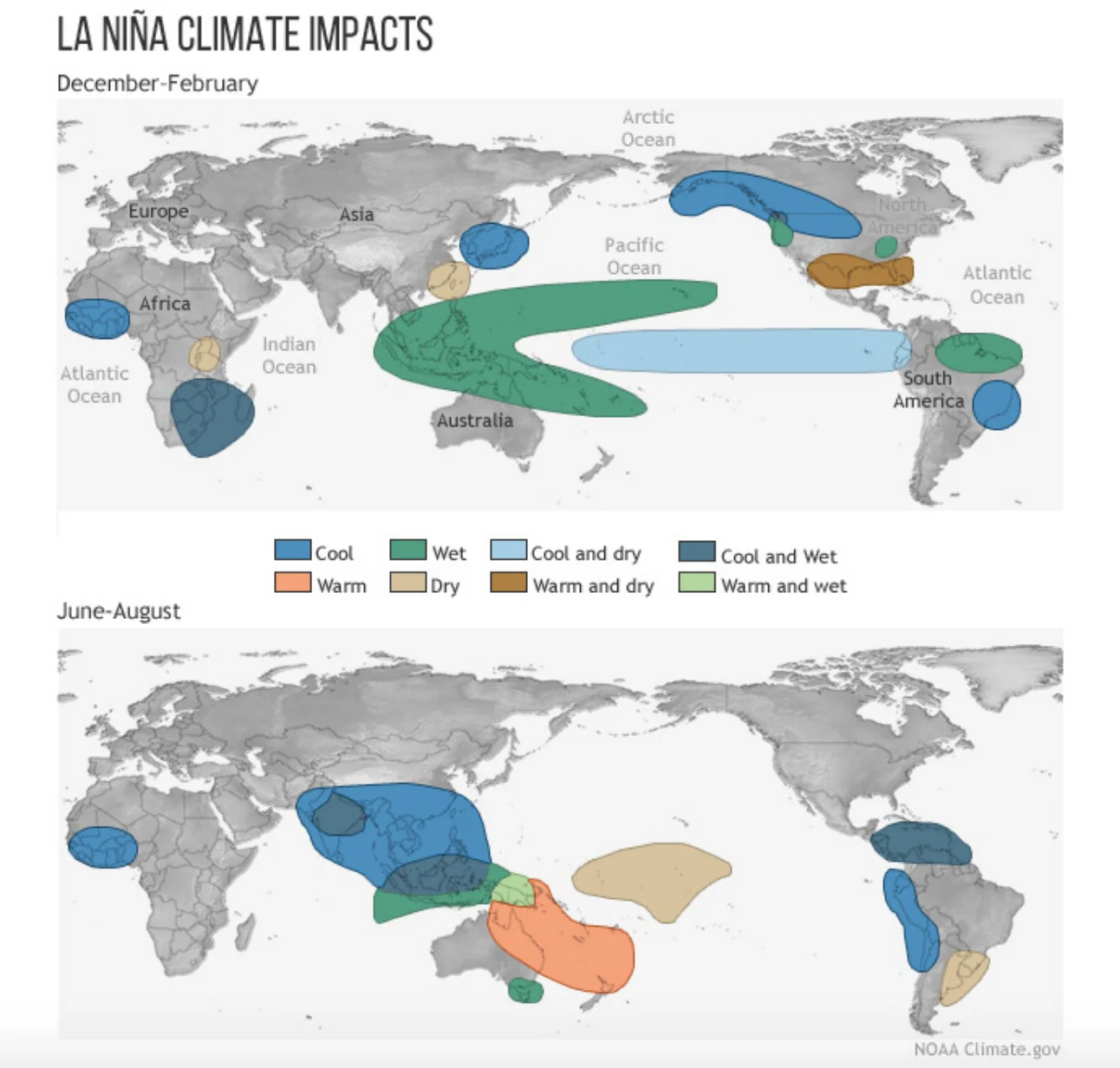
July 2022 was one of the hottest months ever recorded on Earth
Last month came very close to breaking all previous records for heat.
Even with La Niña doing its best to keep 2022 from setting new records for global heat, last month still ranked among the hottest months of the past 143 years.
July 2022 was one of the hottest months ever recorded on Earth according to the world’s major climate monitoring agencies. Based on NASA’s records, it was tied with 2020 for the 3rd warmest July, behind 2019 and 2021. Europe’s Copernicus Climate Change Service also ranked it among the top three warmest Julys in their books, while the Japanese Meteorological Agency has it as fifth warmest overall (although there are two Julys, in 2021 and 2016, that are tied for first).

This graph ranks global temperatures against the average monthly temperatures from 1980 to 2015, putting them into perspective for Earth’s seasonal cycles. According to NASA’s records, July 2022 ranked as tied with 2020 for 3rd hottest month of July since 1880. The inset (top right) zooms in on the peak of the graph to show the rankings in greater detail. (NASA GISS/Scott Sutherland)
According to NOAA, last month was the sixth warmest month of July in their records. That may sound good, like the world was maybe not as hot as it seemed. However, in those same record books, the Julys of 2016, 2019, 2020, and 2021 are all tied for first place.
If this were a sporting event where medals were awarded, all four of those months would awkwardly occupy the top tier of the podium, with 2017 coming in on the second tier, and then 2022 on the third.

The global average temperature for each month of July from 1880 to 2022 is plotted in the graph above (top). The hottest months in the record so far are ranked in the table below the graph (in ascending order, with the coldest July, in 1904, ranking as lowest in the list and the hottest Julys ranked as highest). (NOAA NCEI/Scott Sutherland)
Unfortunately, there are no awards for this. Instead, it is the running tally of the climate crisis we currently face.
From NOAA’s July 2022 Global Climate Report, “The month of July was characterized by warmer-than-average conditions across much of North America, Asia, Europe, and South America. Record-high July temperatures were observed in parts of North and South America, southern and eastern Asia, and Europe, as well as parts of the western and southern Pacific Ocean.”
“During the month, an unprecedented heat wave affected much of Europe and many European countries, including Italy, Portugal, Spain, and the United Kingdom, set new record-high July maximum temperatures,“ the report stated.
In a recent press release, Prof. Petteri Taalas, the secretary-general of the World Meteorological Organization, said that these kinds of heat waves are going to be the normal in the future.
“We will see stronger extremes. We have pumped so much carbon dioxide in the atmosphere that the negative trend will continue for decades. We haven’t been able to reduce our emissions globally. I hope that this will be a wake-up call for governments and that it will have an impact on voting behaviors in democratic countries,” Taalas stated.
Thank La Niña (for now)
Indeed, the globe reached these record and near-record temperatures in the midst of a persistent La Niña pattern in the equatorial Pacific. El Niños tend to push global temperatures up, which led to the record-breaking temperatures of 2015 and 2016. On the other hand, La Niñas tend to cool the world down, or at the very least moderate the heat by adding a cool spot across a large expanse of ocean water.

Temperature anomalies for July 2022 are plotted on the above map, compared to the average 20th century temperature. The swath of cooler-than-normal temperatures (white-green-blue) to the west of South America represent the influence of the La Niña pattern that has persisted since fall of 2020. (NASA GISS)
As NOAA’s records show, above, global temperatures are lagging by a tiny fraction of a degree behind the current record-holders (by 0.05°C, to be exact). World weather patterns all contribute to these temperature anomalies, however the cooling influence of La Niña undoubtedly plays a significant role in the current trend.
If this was a normal year across the Pacific, there’s a good chance that 2022 would already be shattering those records and locked in to become the new hottest year in the books. If it was an El Niño year, we could probably guarantee it.
One more winter
As it stands now, NOAA forecasters are saying that this La Niña is expected to persist throughout the rest of 2022 and into early 2023.

These maps show the typical wintertime weather patterns during La Niña. (NOAA Climate.gov)
“If so, that would make this one of the longest stretches of La Niña conditions of the past 70+ years,” Dr. Emily Becker, the associate director at University of Miami Cooperative Institute for Marine and Atmospheric Studies (CIMAS), wrote on NOAA Climate’s ENSO blog.

